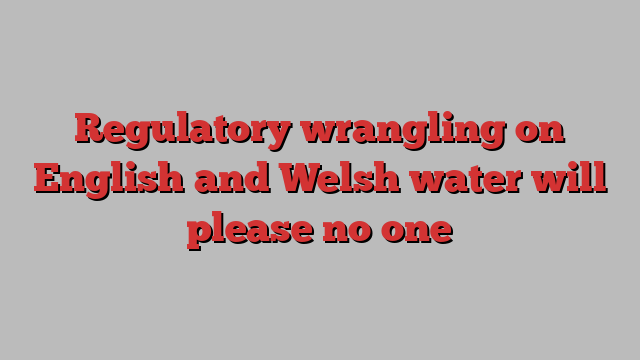
Unlock the Editor’s Digest for free
Roula Khalaf, Editor of the FT, selects her favourite stories in this weekly newsletter.
The negotiations between the English and Welsh water companies and their regulator over investment terms for the next five years are always frothy. Rarely, though, does attention spill beyond the industry. Not this time.
Water watchdog Ofwat will next week deliver its “draft determination” setting what level of returns it believes investors should be able to make between 2025 and 2030. A final decision is due in December. Expect the standard hand-wringing from investors, consumer groups and politicians in between.
Investor expectations going into the process are low, judging by a gloomy Barclays survey. But Ofwat’s chief executive David Black knows full well he has to ensure the regulatory regime is sufficiently attractive to attract both debt and equity investment to the industry.
That will be tougher than ever, not least because of Thames Water’s dire predicament. Addressing sewage spills and ensuring the network as a whole can meet population and climate pressures will require record spending over the five years. Companies have proposed collective capital expenditure of £45bn.
That will be funded upfront by companies through a mix of equity and debt, while customers in effect pay for the construction of assets through their bills in instalments. Also added to customer bills are what Ofwat judges to be efficient operating costs and an allowed return on capital.
Water companies have suggested consumer bills will need to rise by an average of more than 32 per cent, excluding inflation, from 2025. That is a tough sell, amid public and political anger over sewage discharges.
In December 2022, Ofwat estimated an allowed return on capital of about 3.29 per cent in real terms, based on a cost of equity of 4.14 per cent and cost of debt of 2.6 per cent. The cost of equity will probably come under scrutiny as it requires an element of judgment on the regulator’s behalf, says industry consultant Martin Young.
Given that ordinary savings accounts at present offer higher interest rates, Ofwat will have to revise up its cost of equity estimate. Barclays’ survey suggested investors were looking for a figure north of 5 per cent.
It is inevitable that neither investors, consumers nor environmental campaigners will be satisfied. That is fine. Ofwat’s balancing act this time, however, is to do enough to maintain trust in the overall regulatory model.
A similar model is planned to fund future UK nuclear plants and already supports investment in energy networks. A breakdown in investor faith in this process would have negative consequences that would leak well beyond water.
